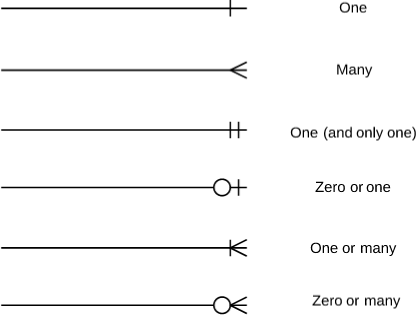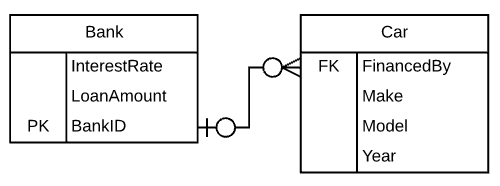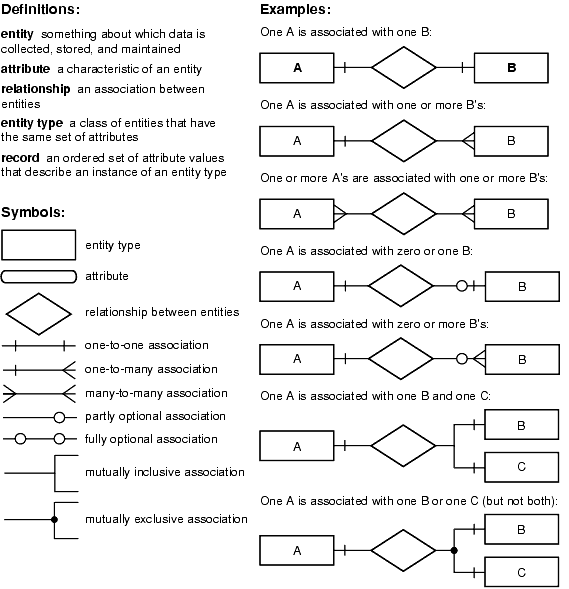entity relationship diagrams - what the lines mean
2019-06-29
|~2 min read
|235 words
Yesterday, in talking about Postgres and Subqueries I was trying to represent a relationship between tables. I knew intuitively what I was trying to communicate, but wasn’t sure about the syntax.
Digging into I found Lucidchart1 had put together a pretty useful cheatsheet on entity-relationship diagrams which the information I was looking for (image credit to Lucidchart).

Interestingly, I think one of the examples they have in the post doesn’t make a lot of sense given that information.

In this example, the BankId is the primary key (which means it’s not nullable). As a result, the way I’m reading the above ERD is that we can have zero or one BankId associated with zero too many cars’ FinancedBy.
How you can have zero is beyond me, however, at least I now know why it’s confusing because what the lines mean is no longer a mystery!
Update Thinking more about this, the zero does not refer whether or not there’s a
BankIDat all, but whether or not thatBankIDis associated with anyCarobjects. Said another way, you can have a bank that has financed zero cars. That’s an appropriate relationship in this ERD. On the other hand.
I also found a resource compiled by Oracle that is similarly useful with some additional examples.

Footnotes
Hi there and thanks for reading! My name's Stephen. I live in Chicago with my wife, Kate, and dog, Finn. Want more? See about and get in touch!